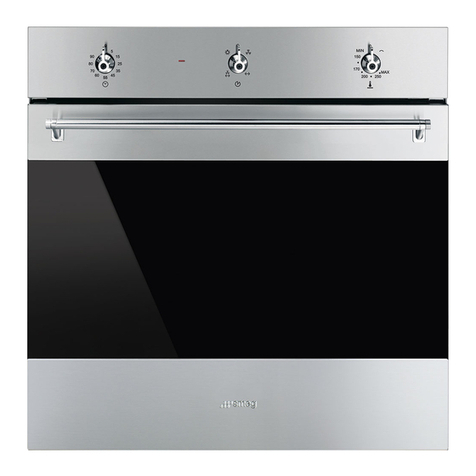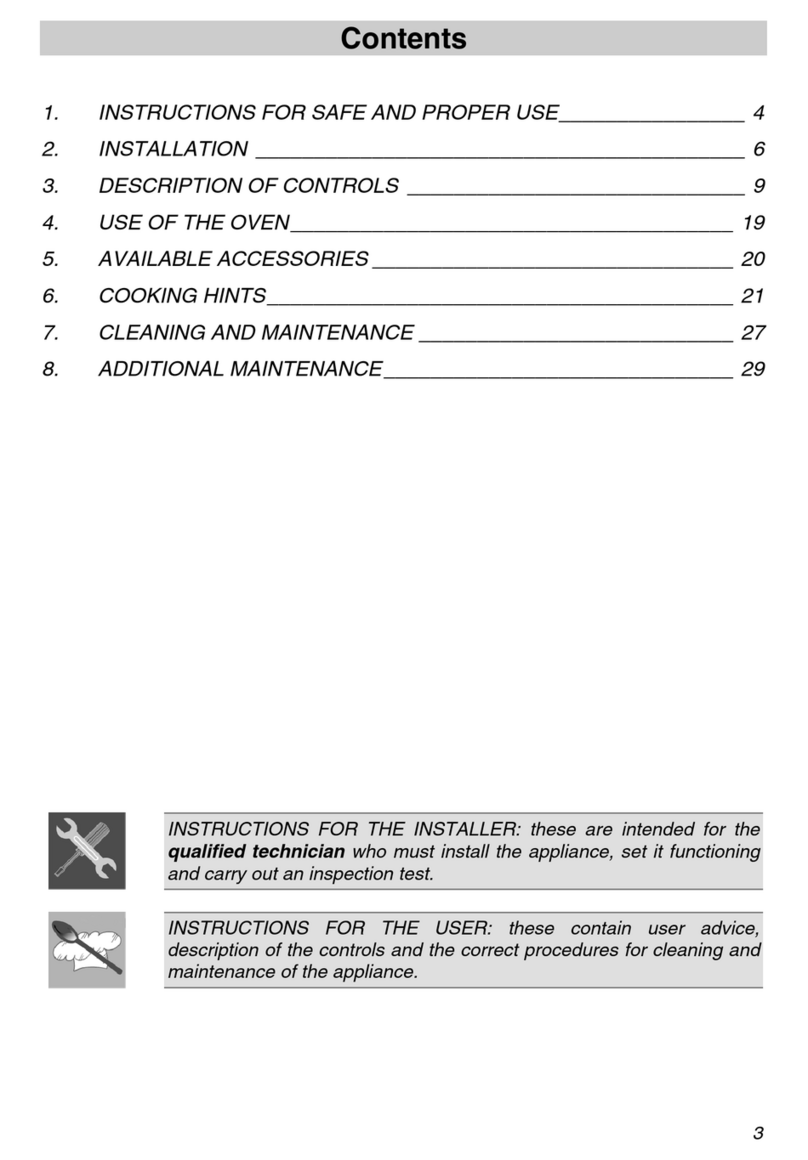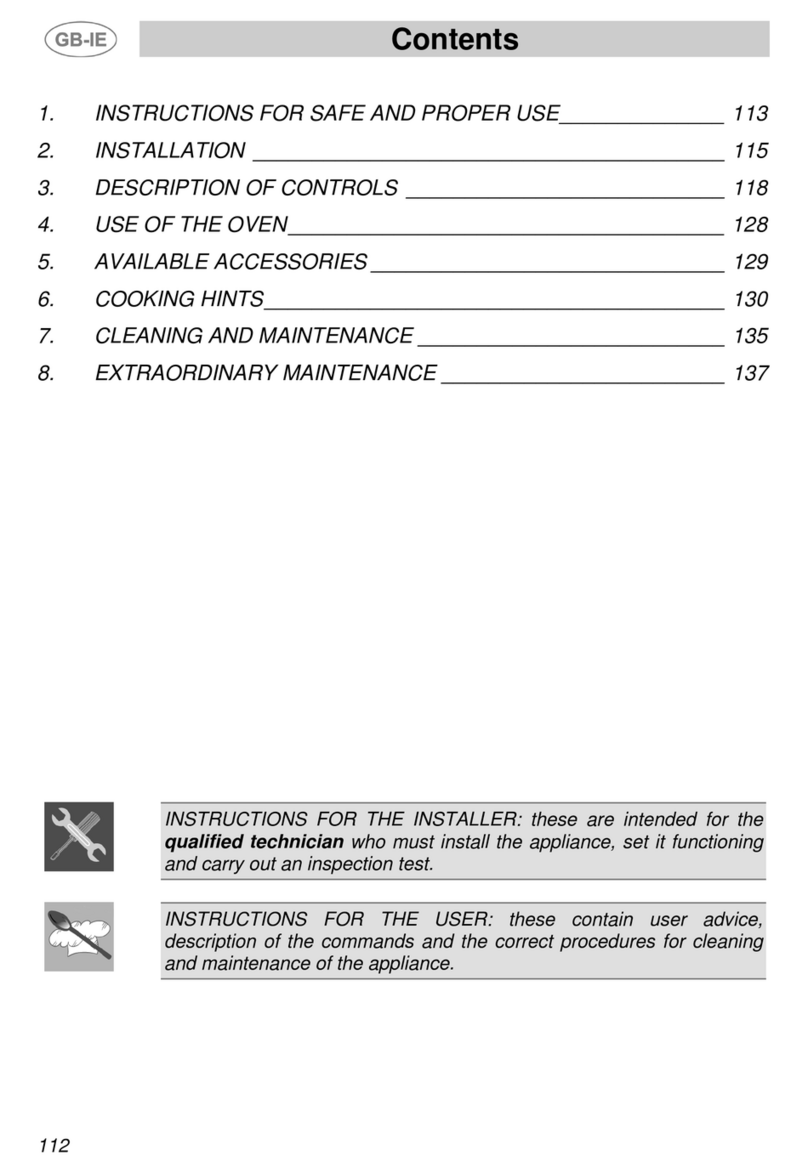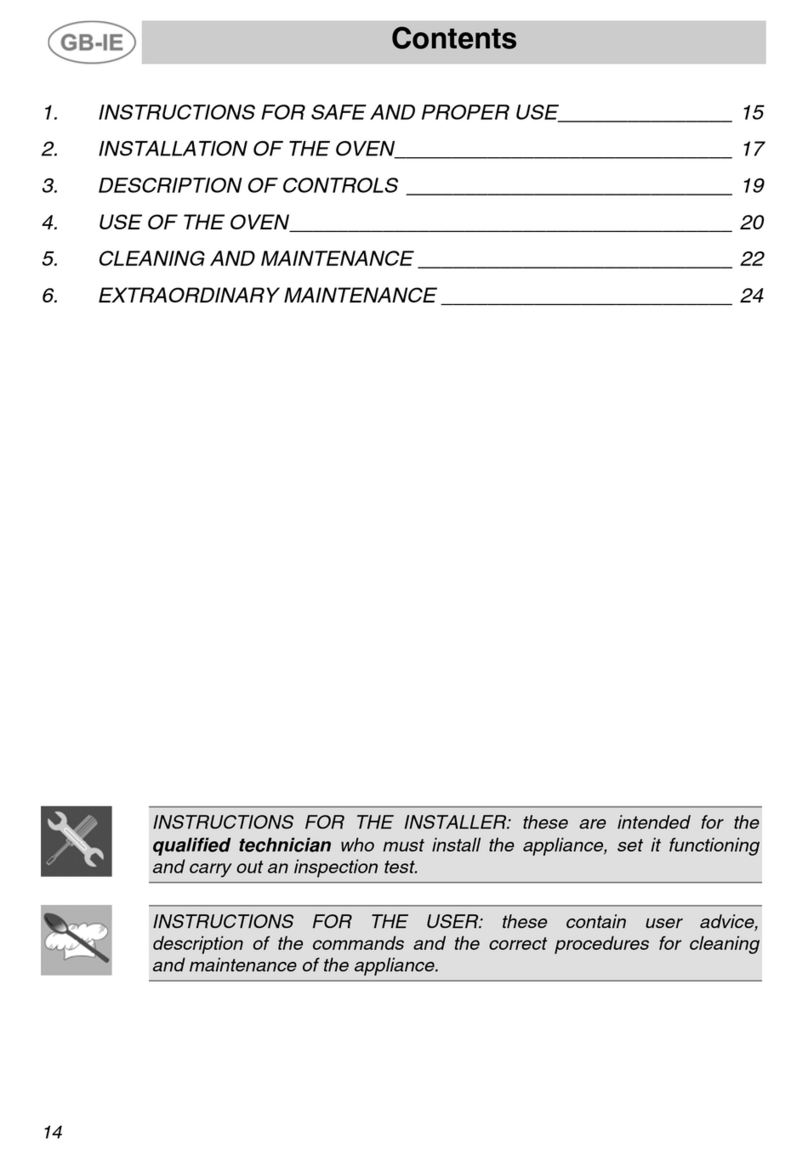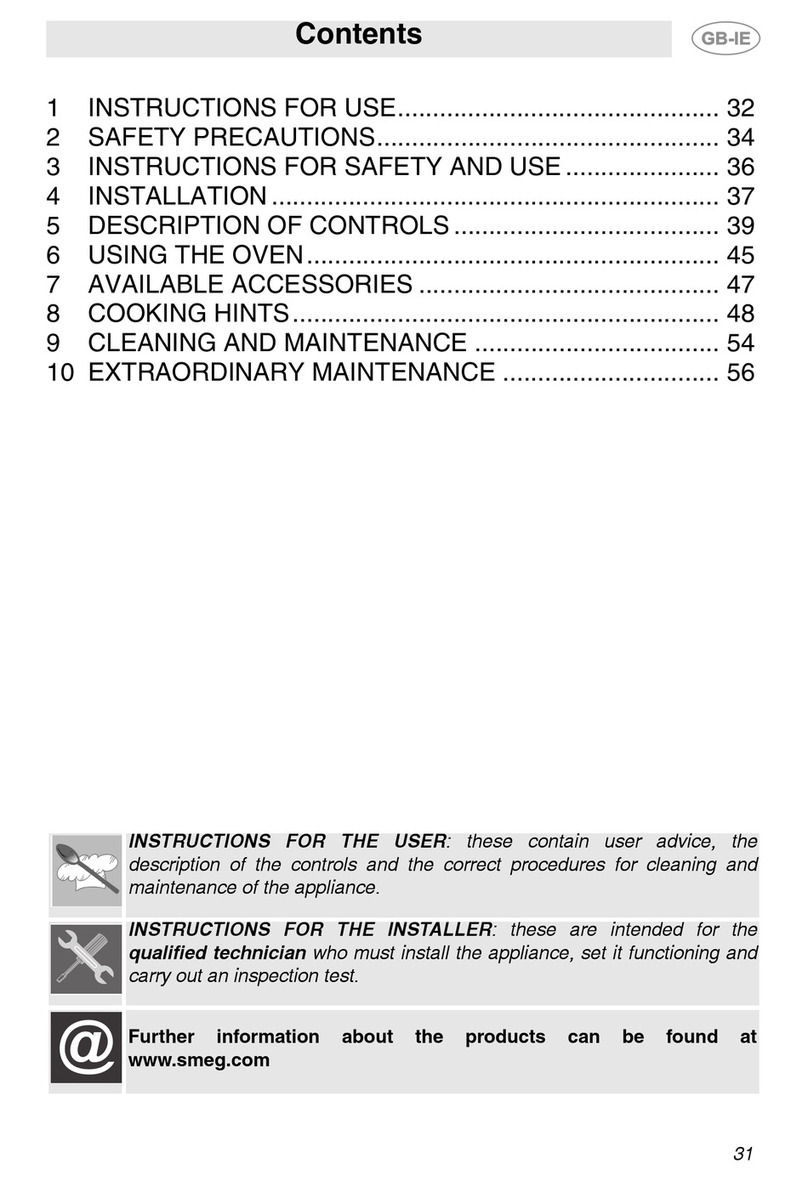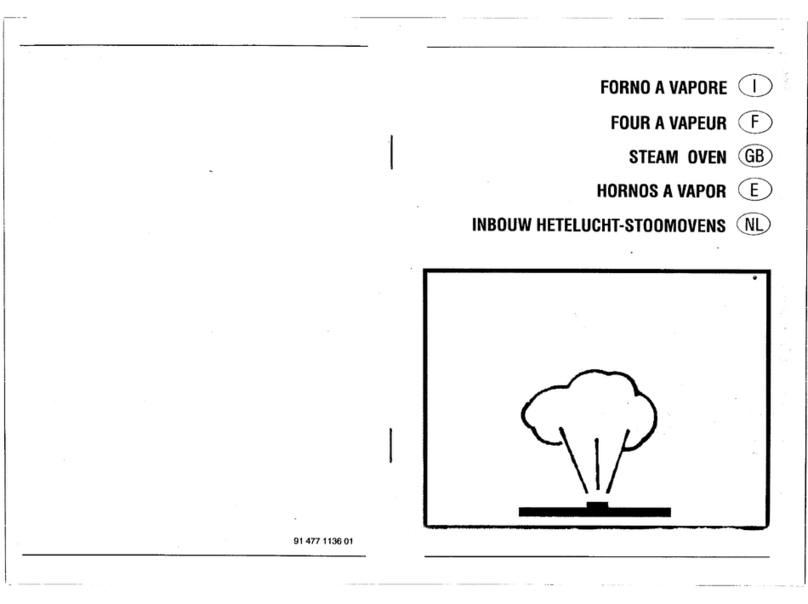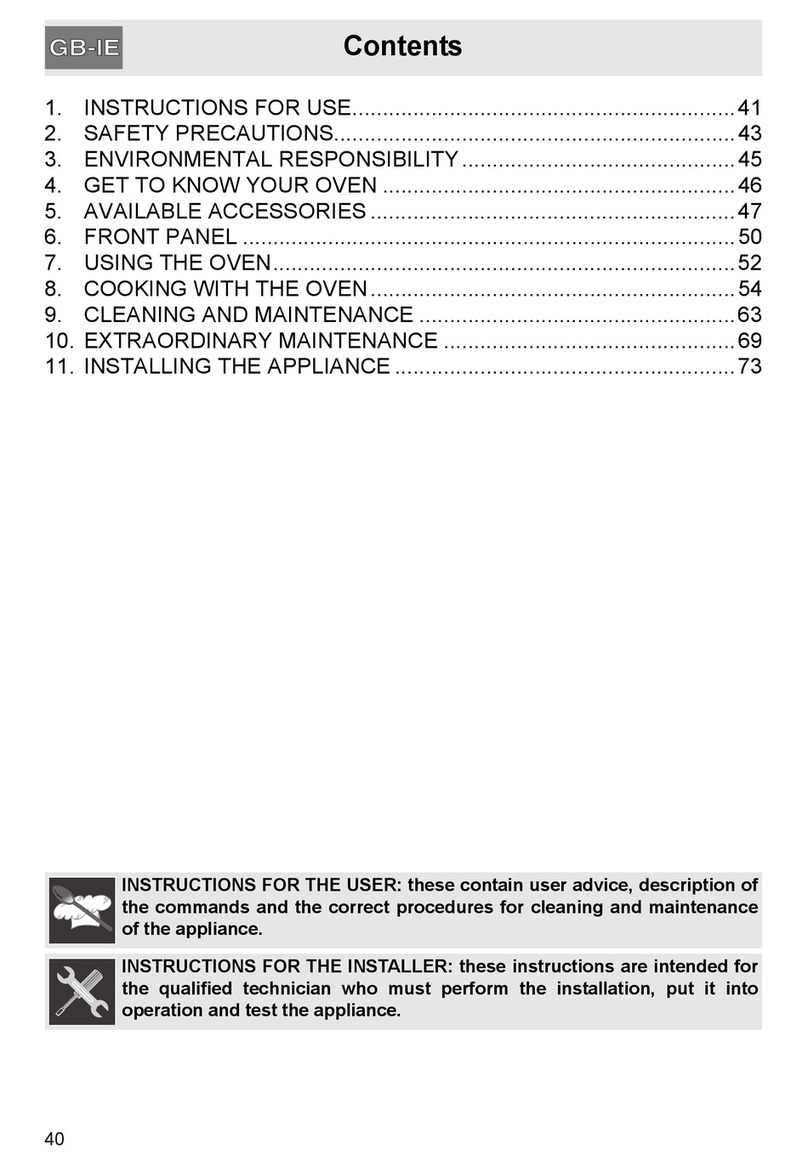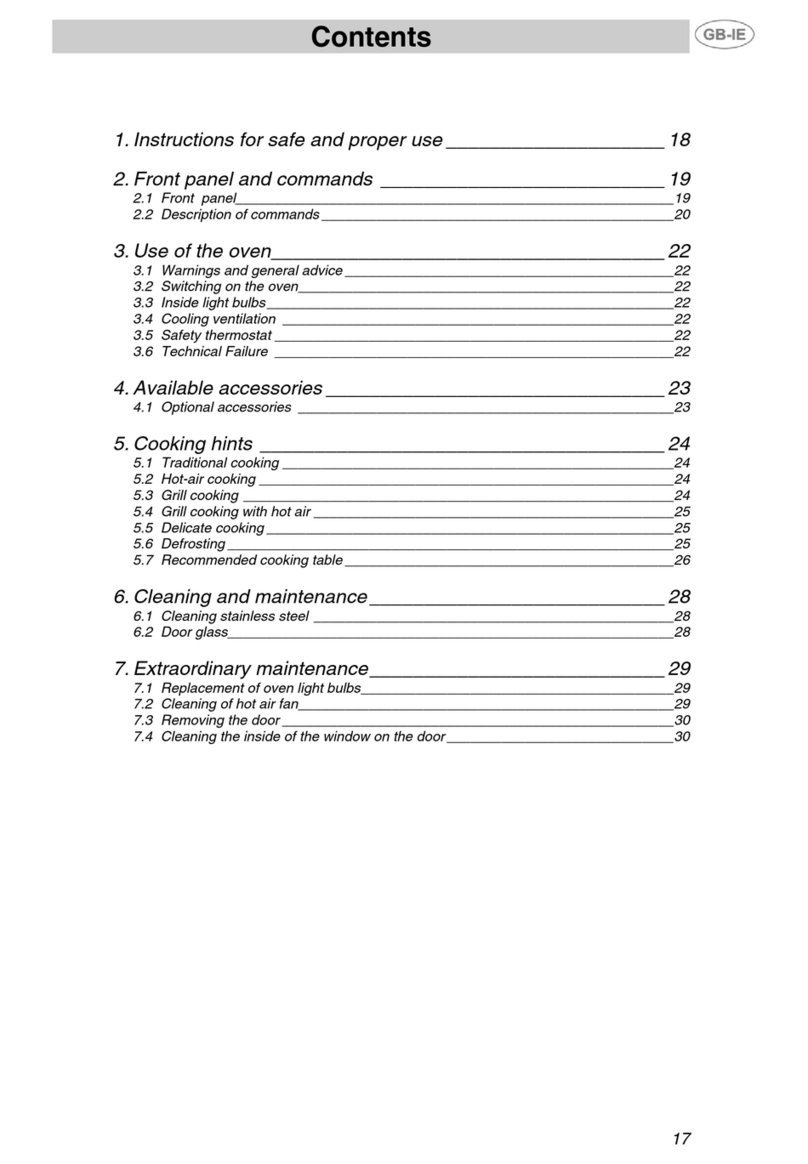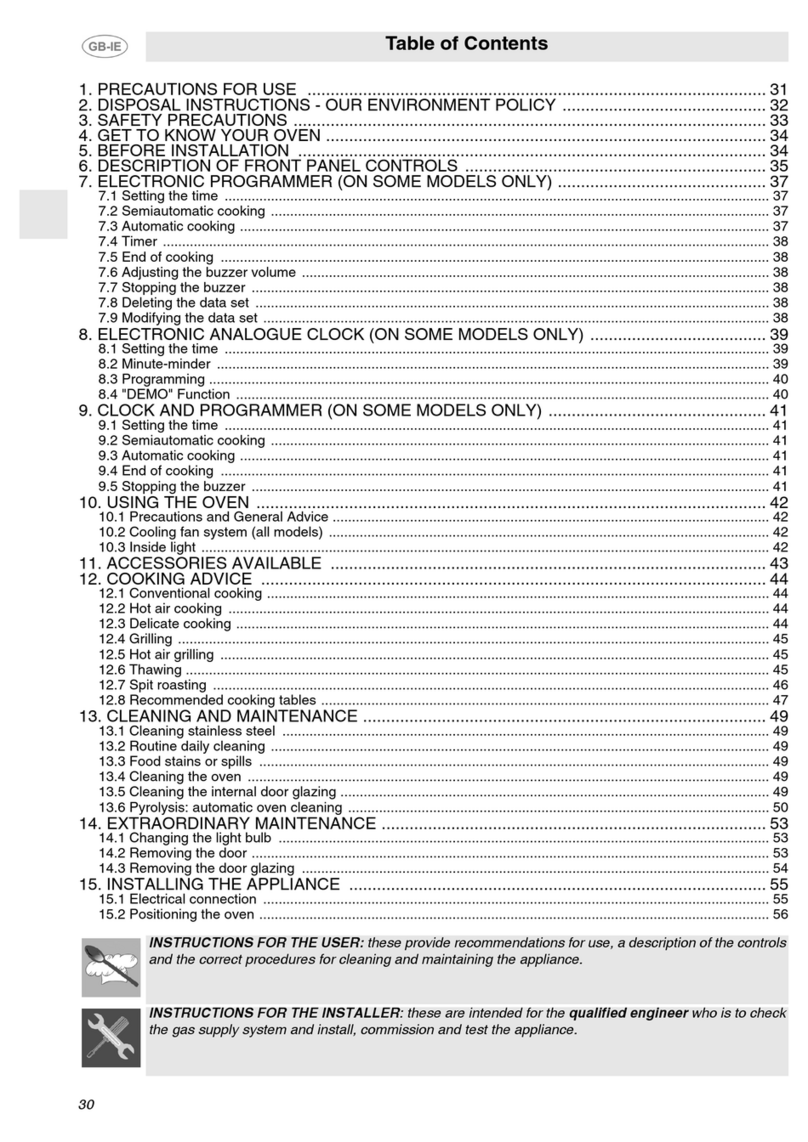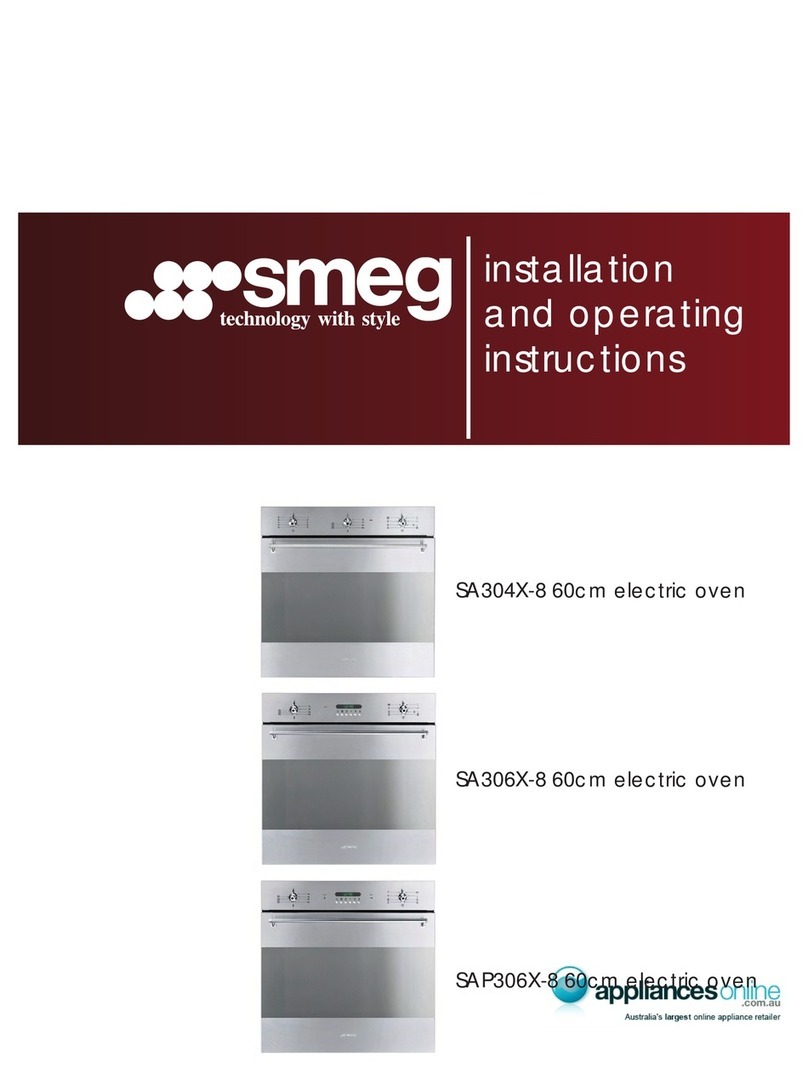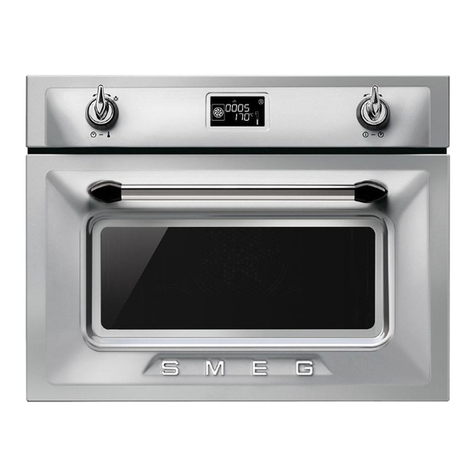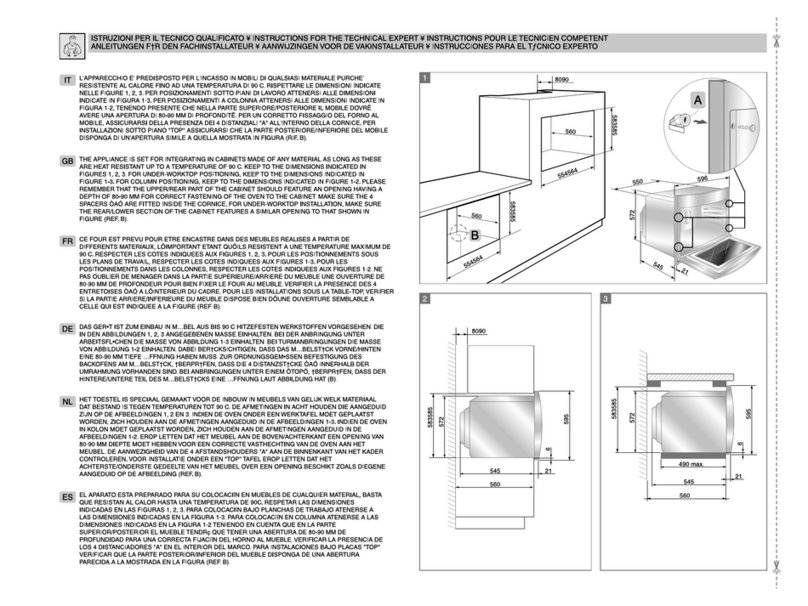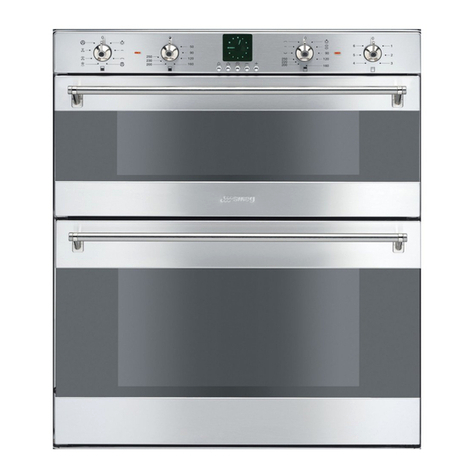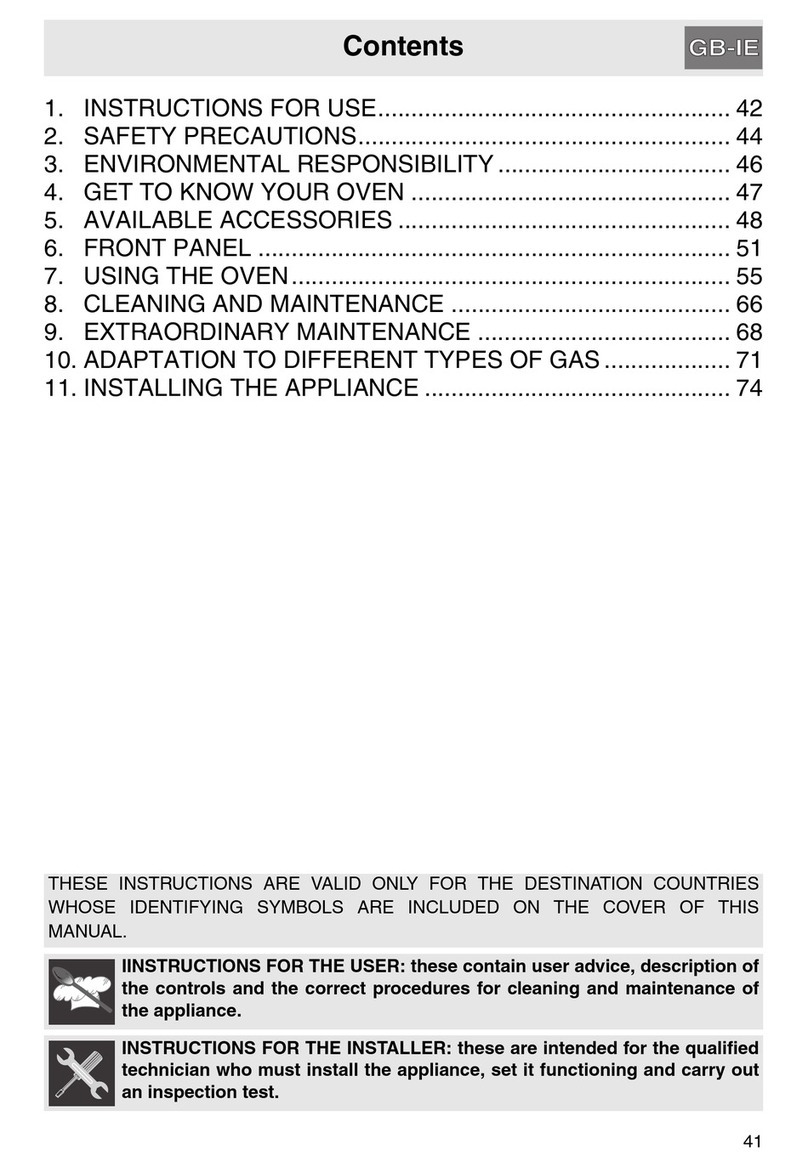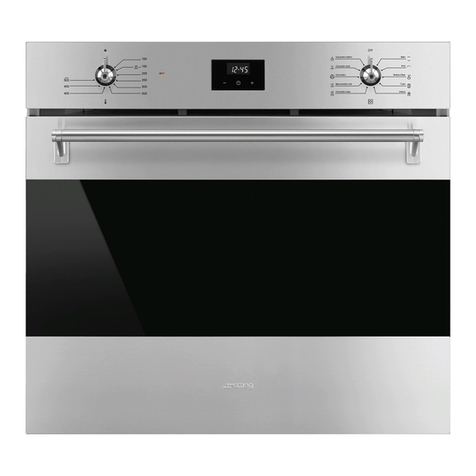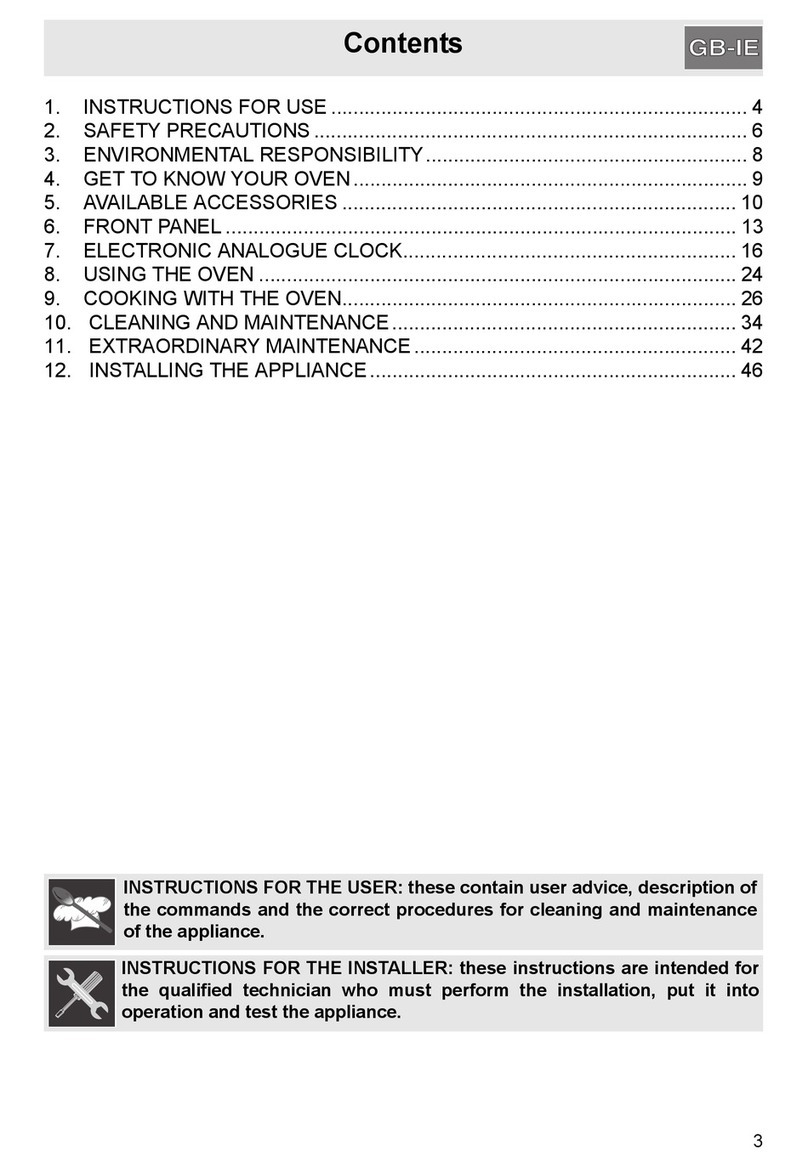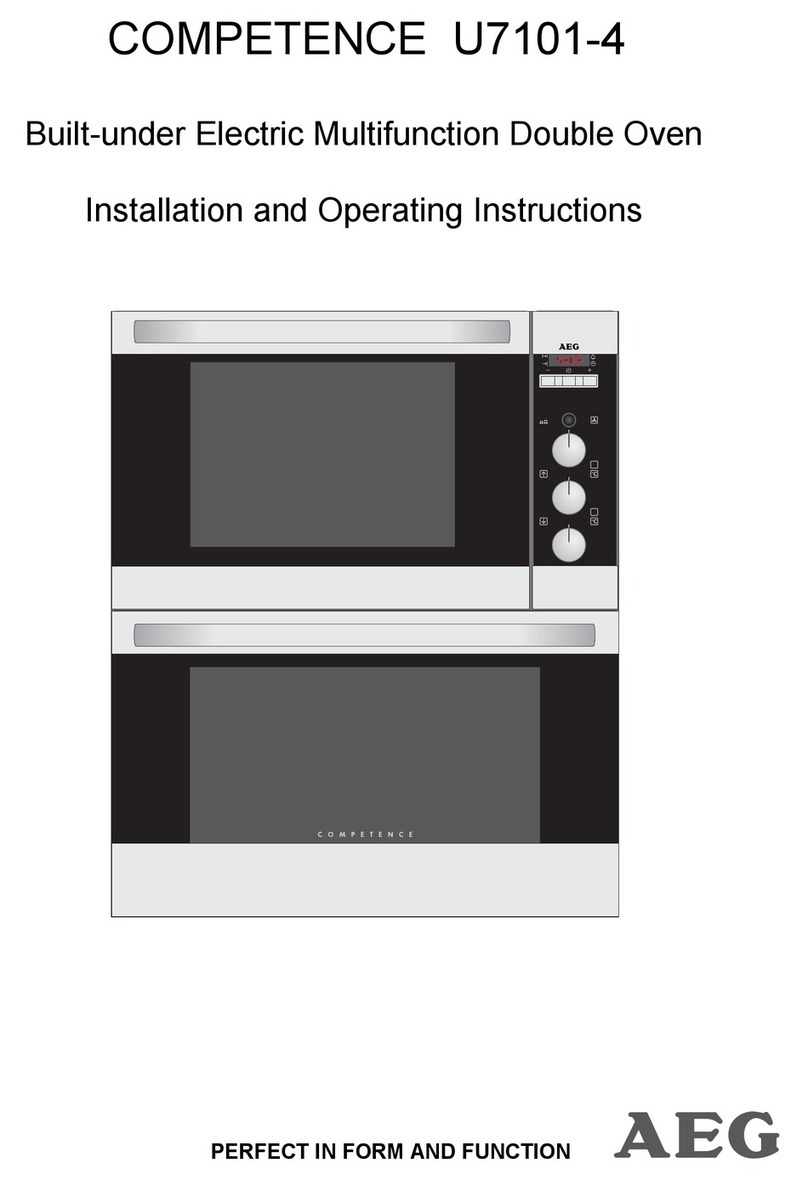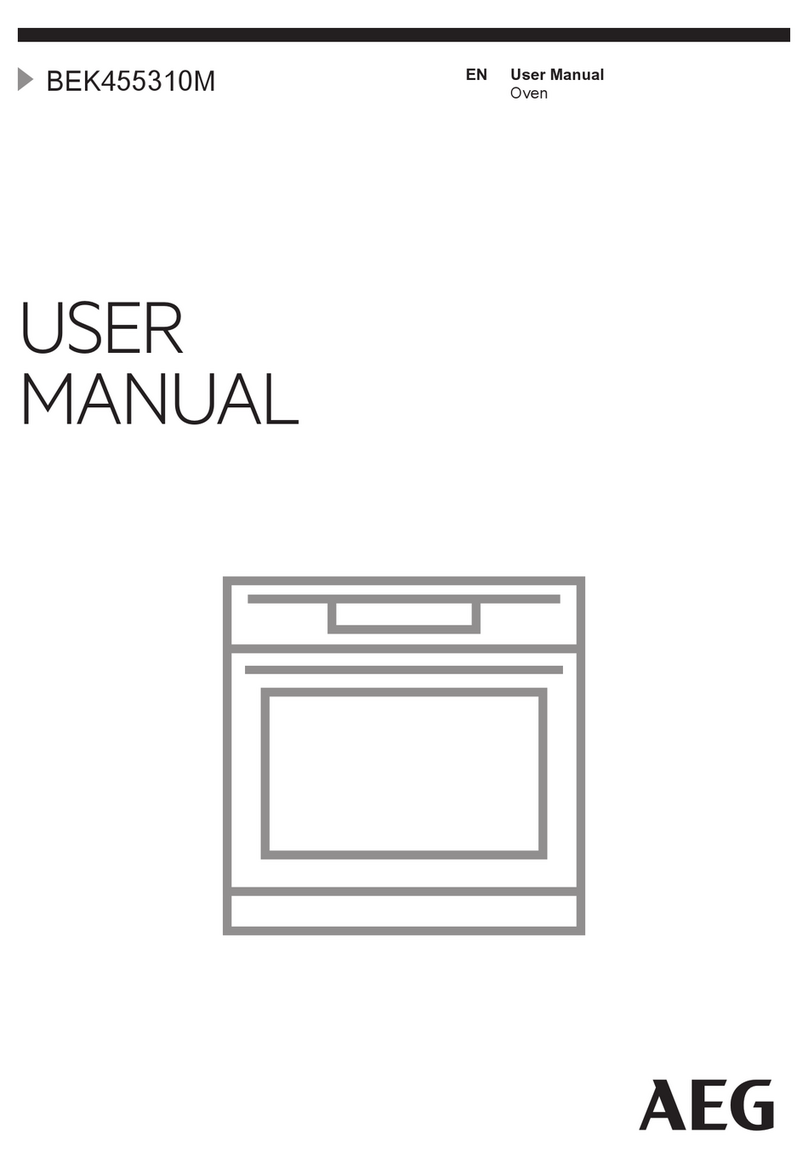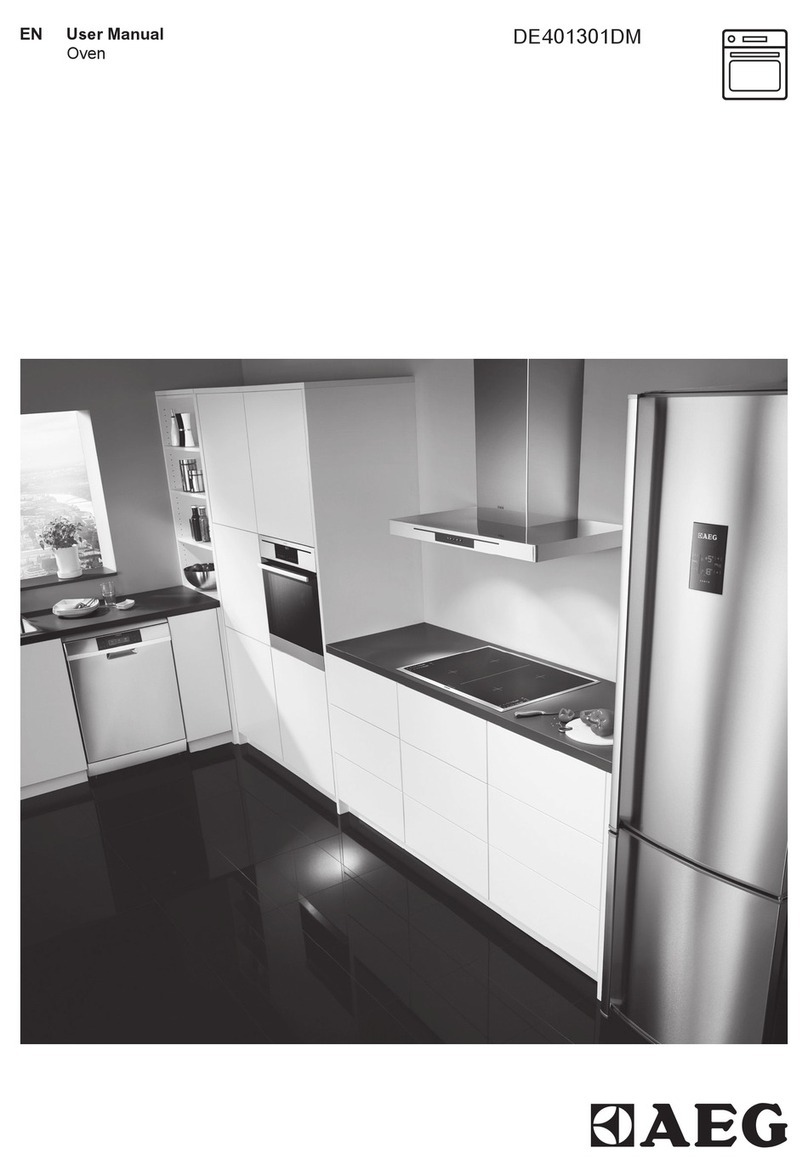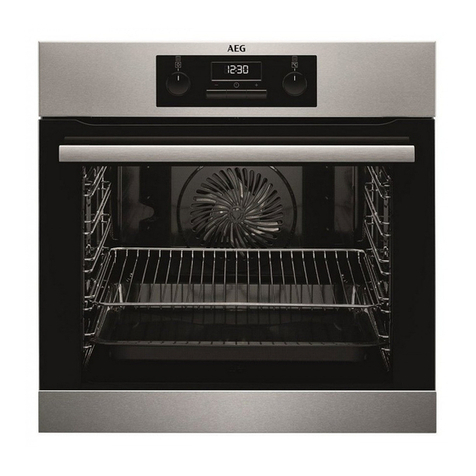43
Instructions for disposal
3. INSTRUCTIONS FOR DISPOSAL – OUR
ENVIRONMENTAL CARE
Our product's packing is made of non-polluting materials, therefore
compatible with the environment and recyclable. Please help by disposing
of the packing correctly. Find the addresses of collection, recycling and
disposal centres from your retailer or from the competent local
organisations.
Do not throw the packing or any part of it away. They can constitute a
suffocation hazard for children, especially the plastic bags.
Your old appliance also needs to be disposed of correctly.
Important: hand over your appliance to the local agency authorised for
the collection of electrical appliances no longer in use. Correct disposal
means intelligent recycling of valuable materials.
Before disposing of your old appliance remove the door and leave the
racks in their normal working positions so that children cannot get stuck in
the oven compartment whilst playing. It is also necessary to cut the
electric power cord and remove it along with the plug.
DO NOT DISCARD PACKING IN THE HOME ENVIRONMENT. SEPARATE THE
VARIOUS WASTE MATERIALS AND TAKE THEM TO THE NEAREST SPECIAL
GARBAGE COLLECTION CENTRE.
INFORMATION FOR USERS
PURSUANT TO DIRECTIVES 2002/95/EC, 2002/96/EC AND 2003/108/EC
RELATING TO THE REDUCTION OF THE USE OF HAZARDOUS SUBSTANCES
IN ELECTRICAL AND ELECTRONIC APPLIANCES, AS WELL AS TO THE
DISPOSAL OF REFUSE. THE CROSSED OUT BIN SYMBOL ON THE
APPLIANCE INDICATES THAT THE PRODUCT, AT THE END OF ITS USEFUL
LIFE, MUST BE COLLECTED SEPARATELY FROM OTHER REFUSE.
THEREFORE, THE USER MUST CONSIGN THE PRODUCT THAT HAS
REACHED THE END OF ITS WORKING LIFE TO THE APPROPRIATE
DIFFERENTIATED COLLECTION CENTRES FOR ELECTRICAL AND
ELECTRONIC REFUSE, OR DELIVER IT BACK TO THE RETAILER WHEN
PURCHASING AN EQUIVALENT PRODUCT, ON A ONE FOR ONE BASIS.
ADEQUATE DIFFERENTIATED COLLECTION FOR THE SUBSEQUENT
FORWARDING OF THE DECOMMISSIONED PRODUCT TO RECYCLING,
TREATMENT AND ECOLOGICALLY COMPATIBLE DISPOSAL CONTRIBUTES
TO AVOIDING POSSIBLE NEGATIVE EFFECTS ON THE ENVIRONMENT AND
ON HEALTH AND PROMOTES THE RECYCLING OF THE MATERIALS OF
WHICH THE APPLIANCE CONSISTS. THE ILLICIT DISPOSAL OF THE
PRODUCT BY THE USER RESULTS IN THE APPLICATION OF
ADMINISTRATIVE SANCTIONS.
